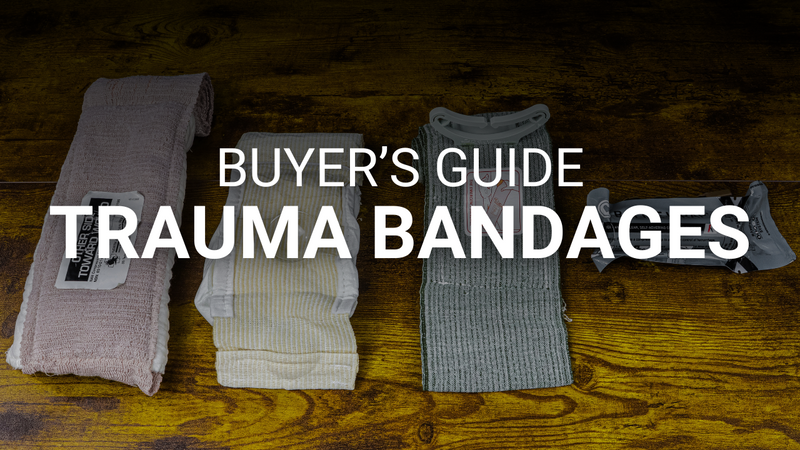Buyers Guide: Trauma Bandages
What is a Trauma Bandage
A Trauma Bandage is usually an elastic wrap with a non-stick pad. Trauma Bandages should be used in conjunction with gauze or hemostatic gauze. After all, we need to stop the bleeding. First, you will pack the wound, and hold pressure (times vary depending on the gauze you select). For standard gauze, you will hold pressure for 8-10 minutes, and for hemostatic gauze you will hold pressure for 3 minutes. You will then wrap the wound with a trauma dressing. While wrapping, ensure you are applying pressure with the dressing and it is not loose around the wound.
Emergency Trauma Dressing
The North American Rescue Emergency Trauma Dressing (ETD) is one of the easiest to use dressings on this list. Its design is simple. Essentially all its variations are elastic wraps with a non-adhesive pad and a clip at the end of the wrap to secure the bandage. We are often asked what the difference is between their "Responder ETD" and "Standard ETD". On the standard, there are Velcro strips throughout the wrap to keep it from unraveling. This is great for mud, dirt and other unsanitary areas where the bandage may become dirty. The Responder versions do not have the Velcro stop feature and are more well-suited for commercial buildings and cleaner areas.
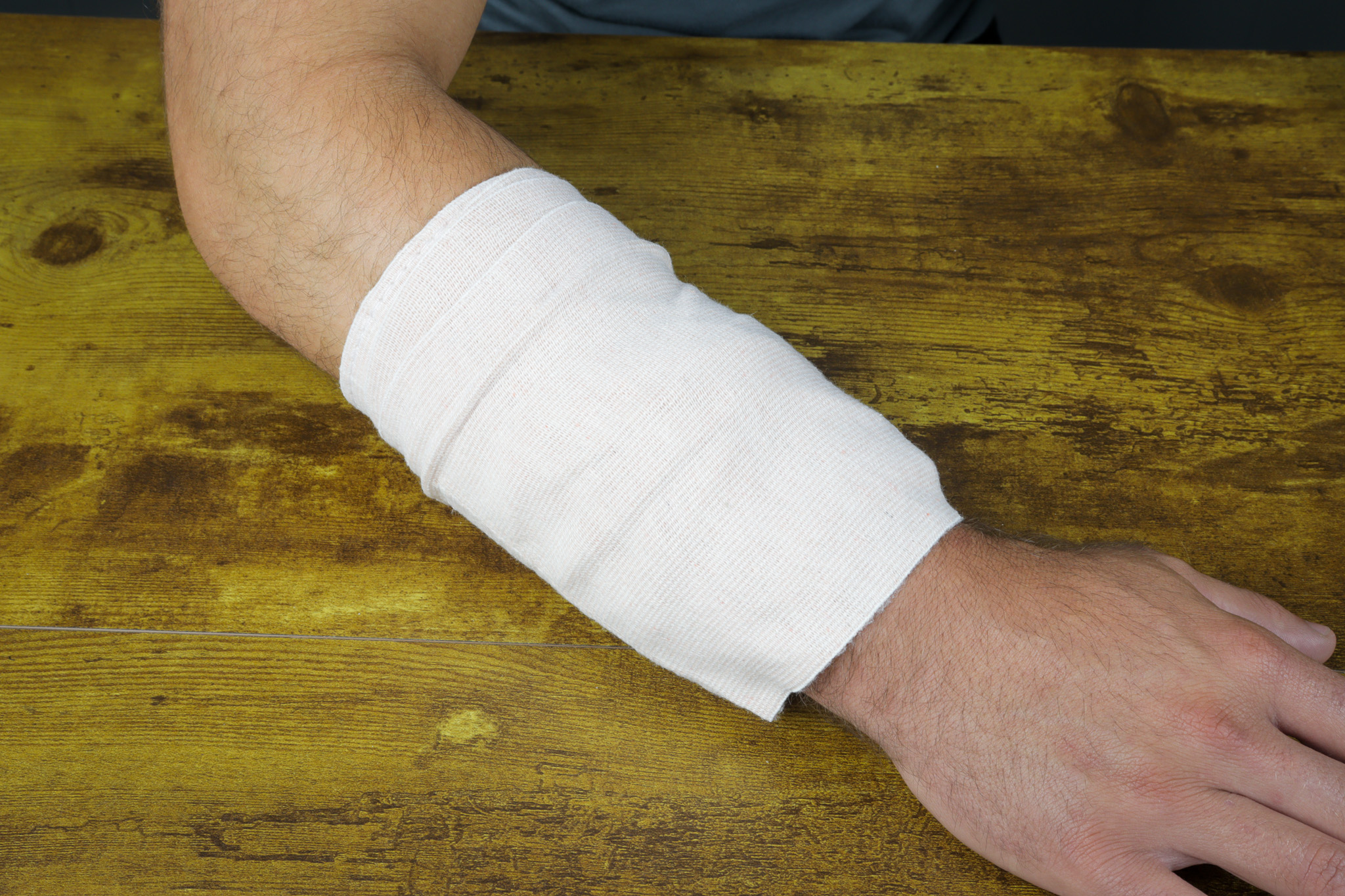
OLAES Bandage
Similar to the NAR ETD, the OLAES Bandage has a few tricks up its sleeve (literally). Inside the non-adherent pad is 3 meters of gauze, creating an all-in-one solution. No longer do you need to open 2 packages during a wound packing and wrapping process. If your style is to carry two wound packing gauze for a deep laceration, you'll save some space.
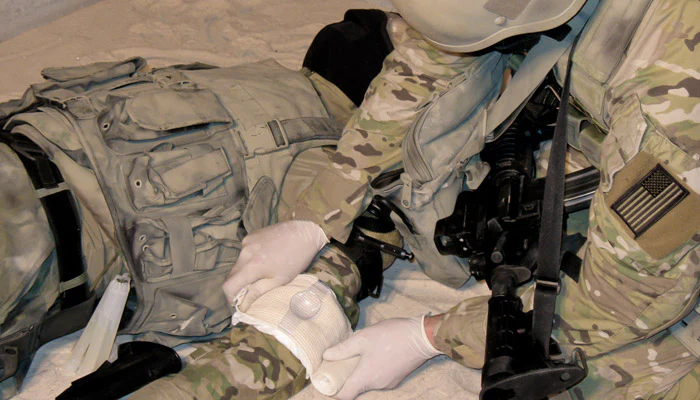
Image credit: TacMed Solutions
The OLAES Bandage also comes with an occlusive sheet inside. If you have some tape and a GSW to the chest, you can make an improvised chest seal.
Israeli Emergency Bandage
Formerly known as the Israeli Bandage from PerSys Medical, the Emergency Bandage is the most popular dressing used by militaries worldwide. It is still made in Israel, now by parent company Safeguard Medical. The Emergency Bandage has a pressure bar that allows over 40+ pounds of pressure to be applied to a wound. You can also use it as a non-pneumatic tourniquet by taking the clip at the end, funneling it under the elastic wrap, and twisting it like a windlass.
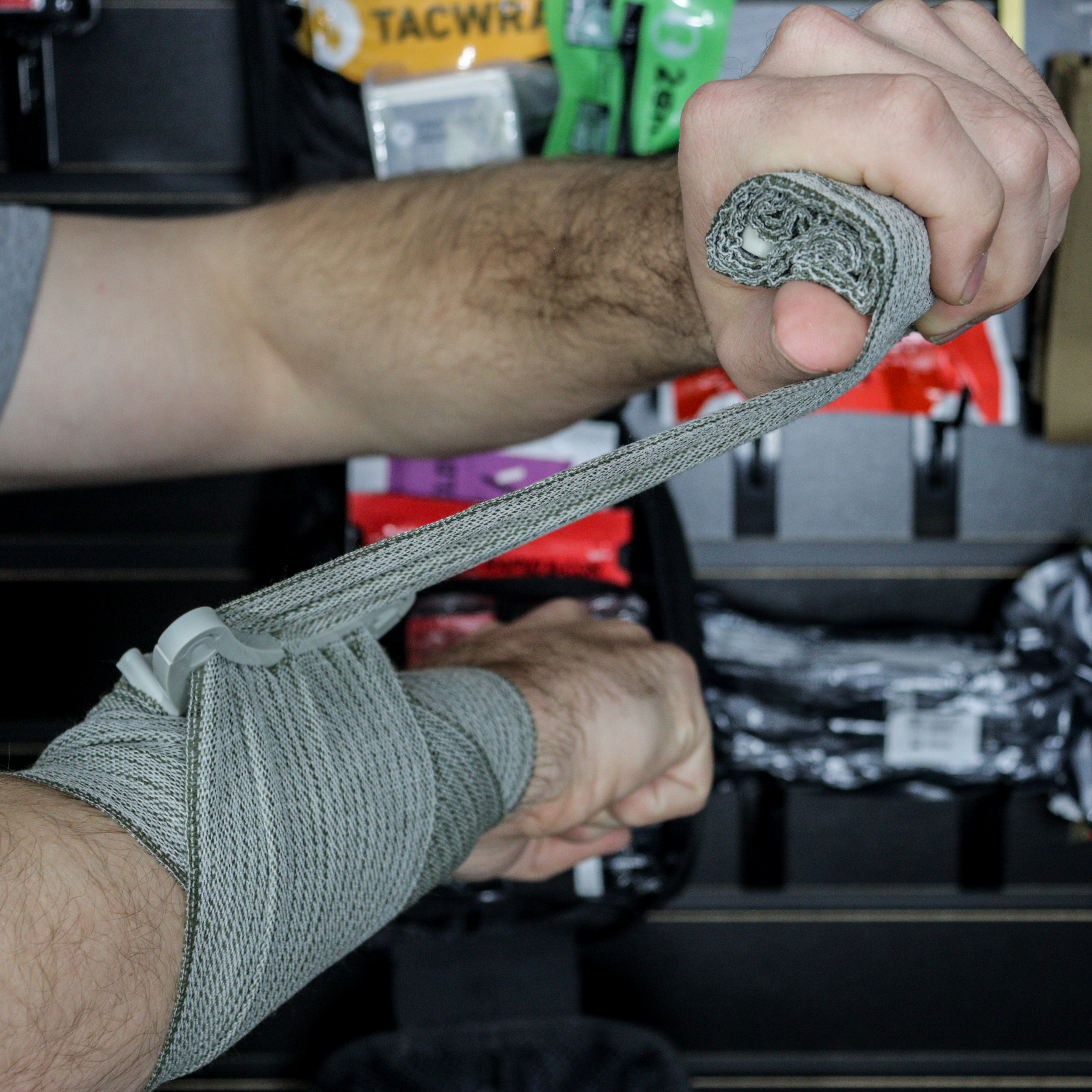
With a shelf life of 8 years, it is the longest-lasting bandage on this list. It is double vacuum sealed, so you can use the external wrapping as an occlusive sheet as well.
Battle Wrap
By far the most innovative, yet simple bandage on this list is the Battle Wrap. Coming from NASCAR, it was used to secure bumpers to cars after accidents, but designed to be clear for sponsors' logos to still be seen. With this, the Battle Wrap can apply up to 500 pounds per square inch of pressure, an awe-inspiring feat. Being clear allows the wound to be evaluated, rather than a traditional trauma dressing that does not grant this ability. One of the most fascinating things about the Battle Wrap is it only adheres to itself. It does not stick to the skin, but only to itself and leaves no residue on the skin.
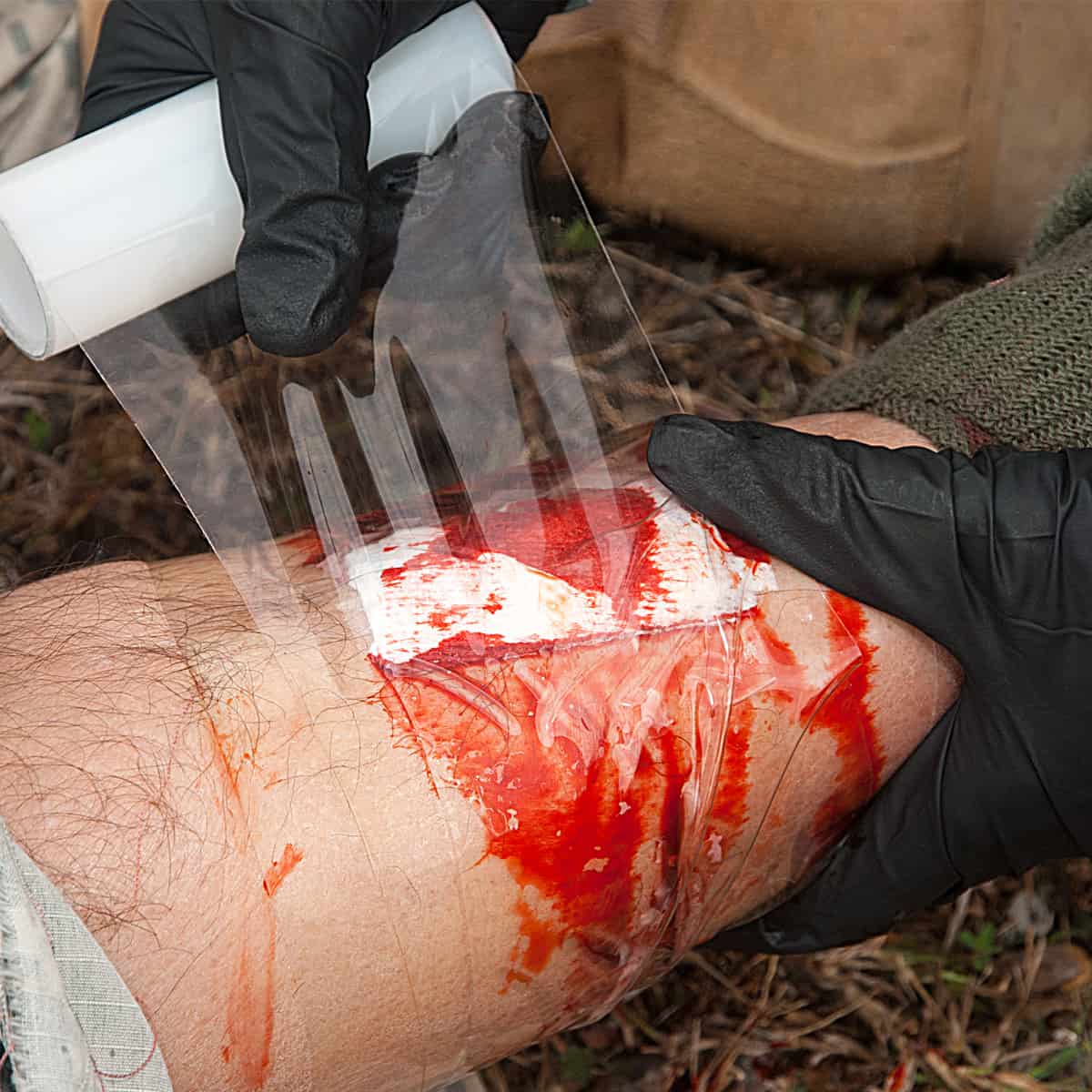
Image Credit: Safeguard Medical
-
Gift shopping for guys can feel tricky, especially if he already has everything or he’s the …Nov 23rd 2025
-
Essential Medical Tools Every Hiker Should Carry When Backpacking in 2025 Backpacking into remote or …Aug 1st 2025
-
When uncontrollable bleeding occurs you want to be prepared. Having an effective tourniquet on hand …Jun 25th 2025

